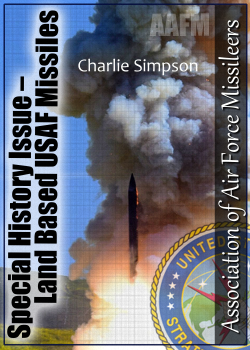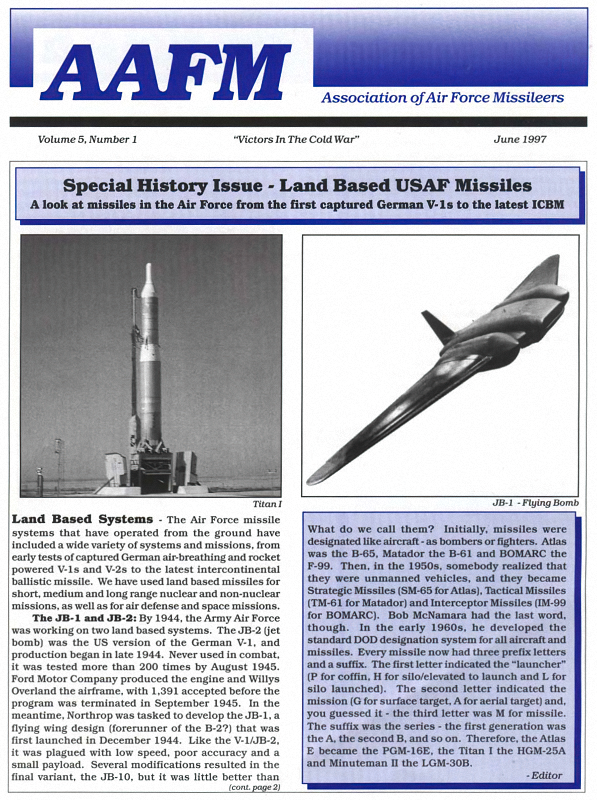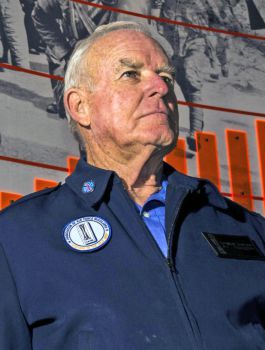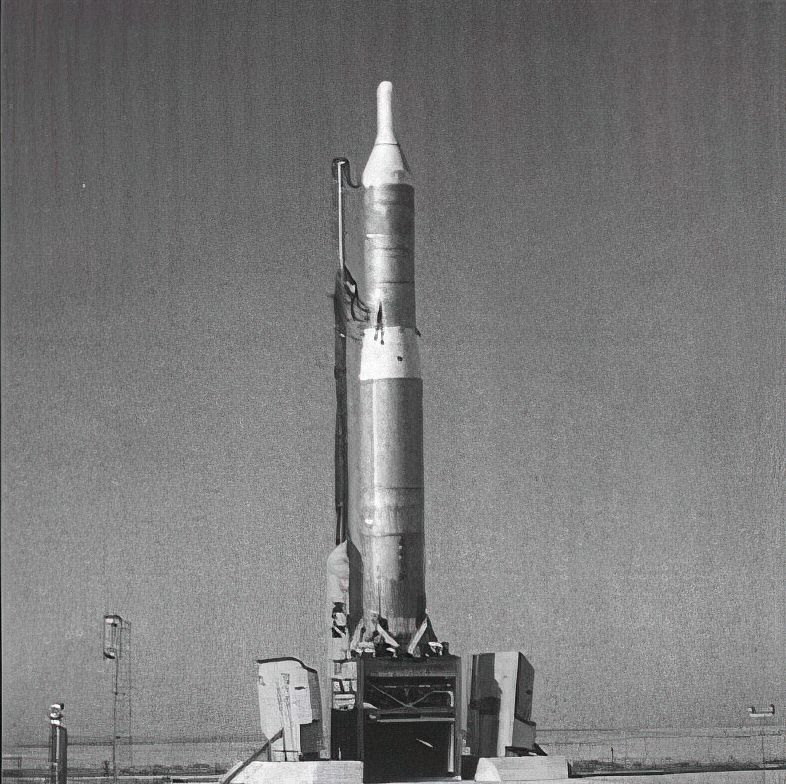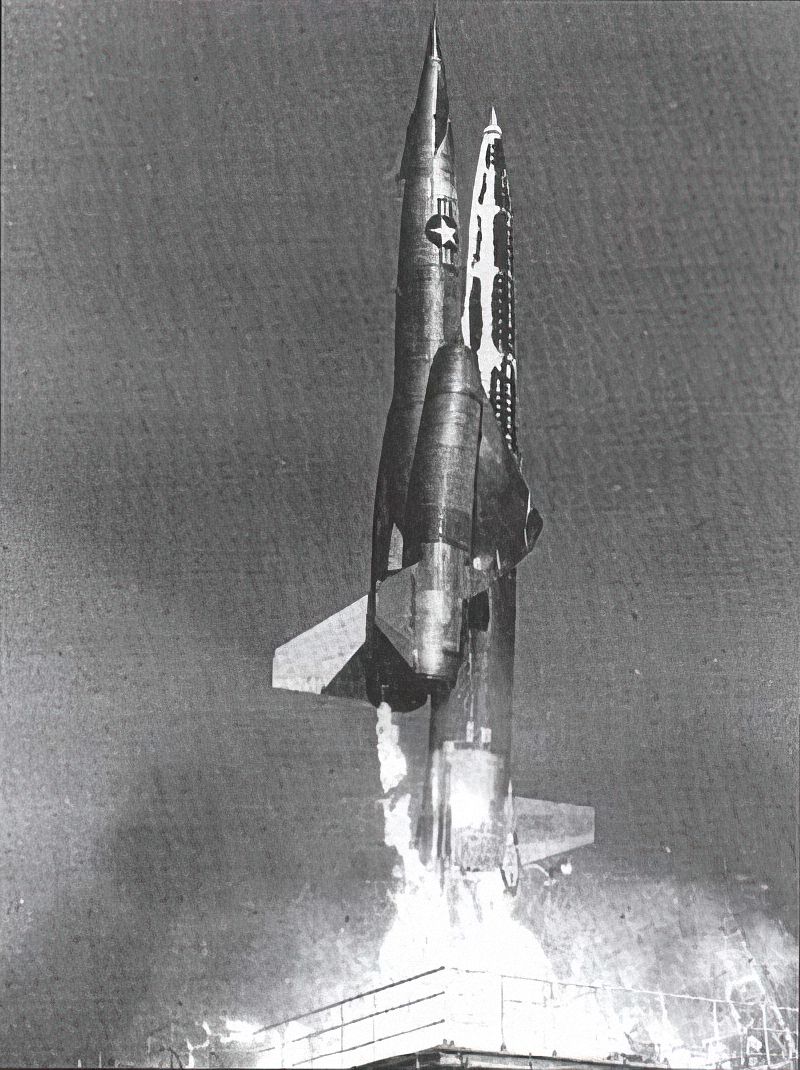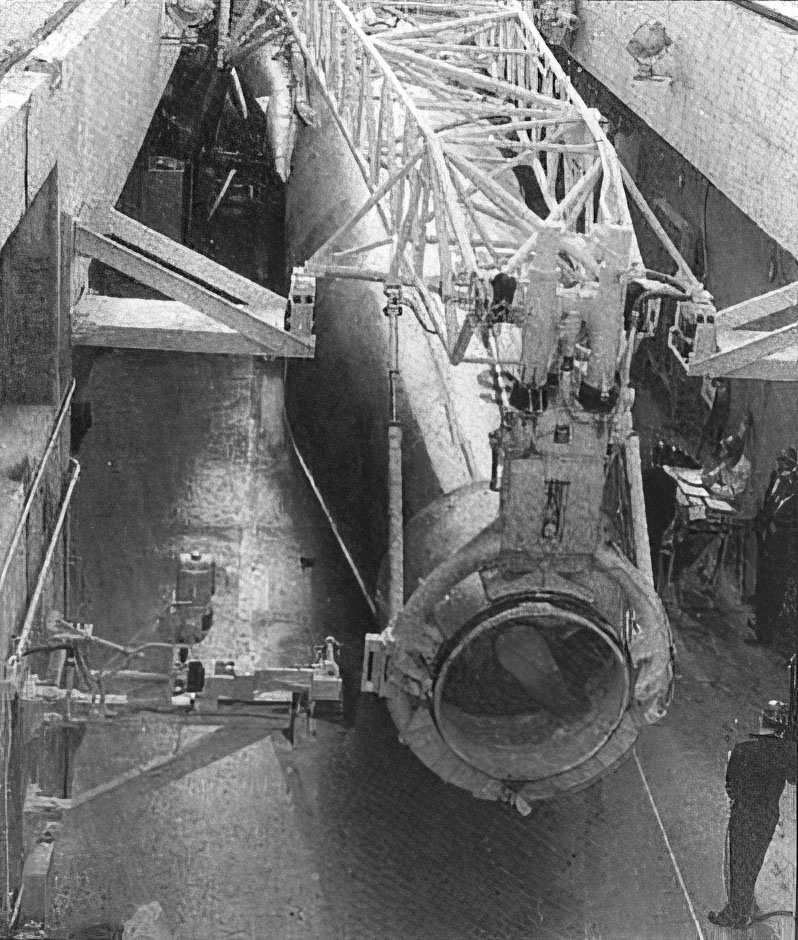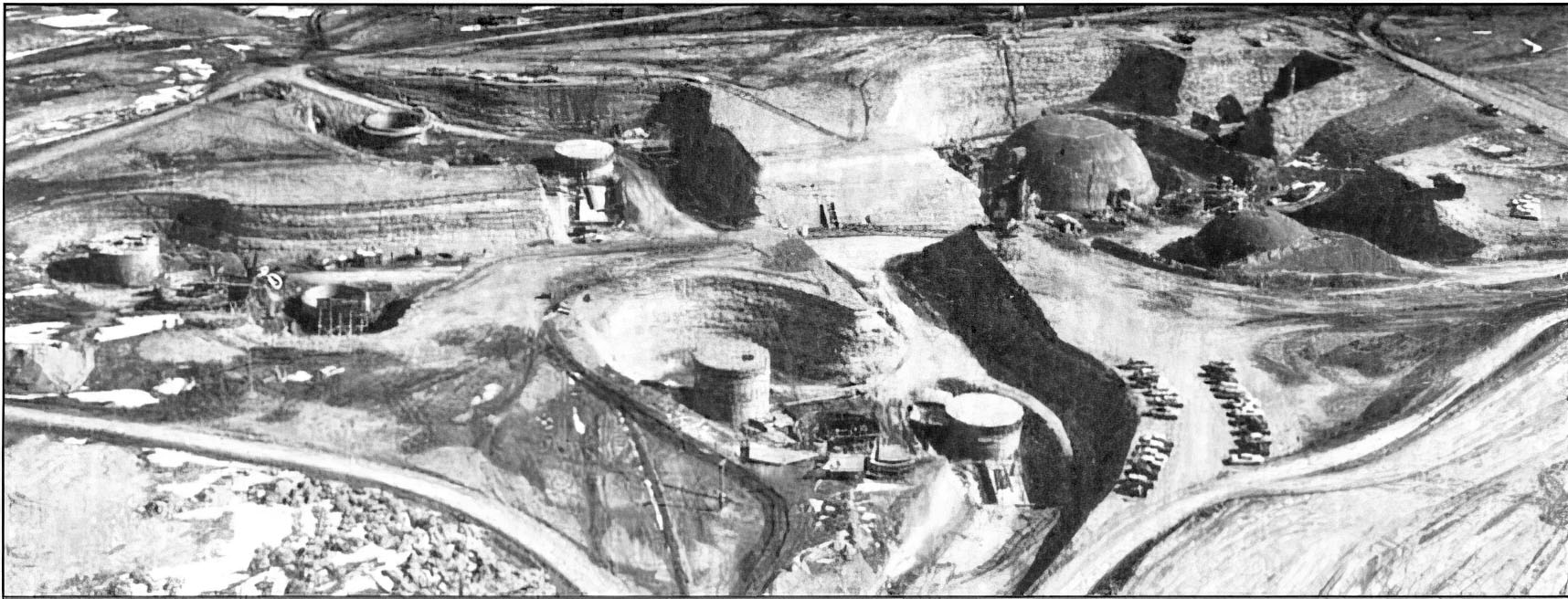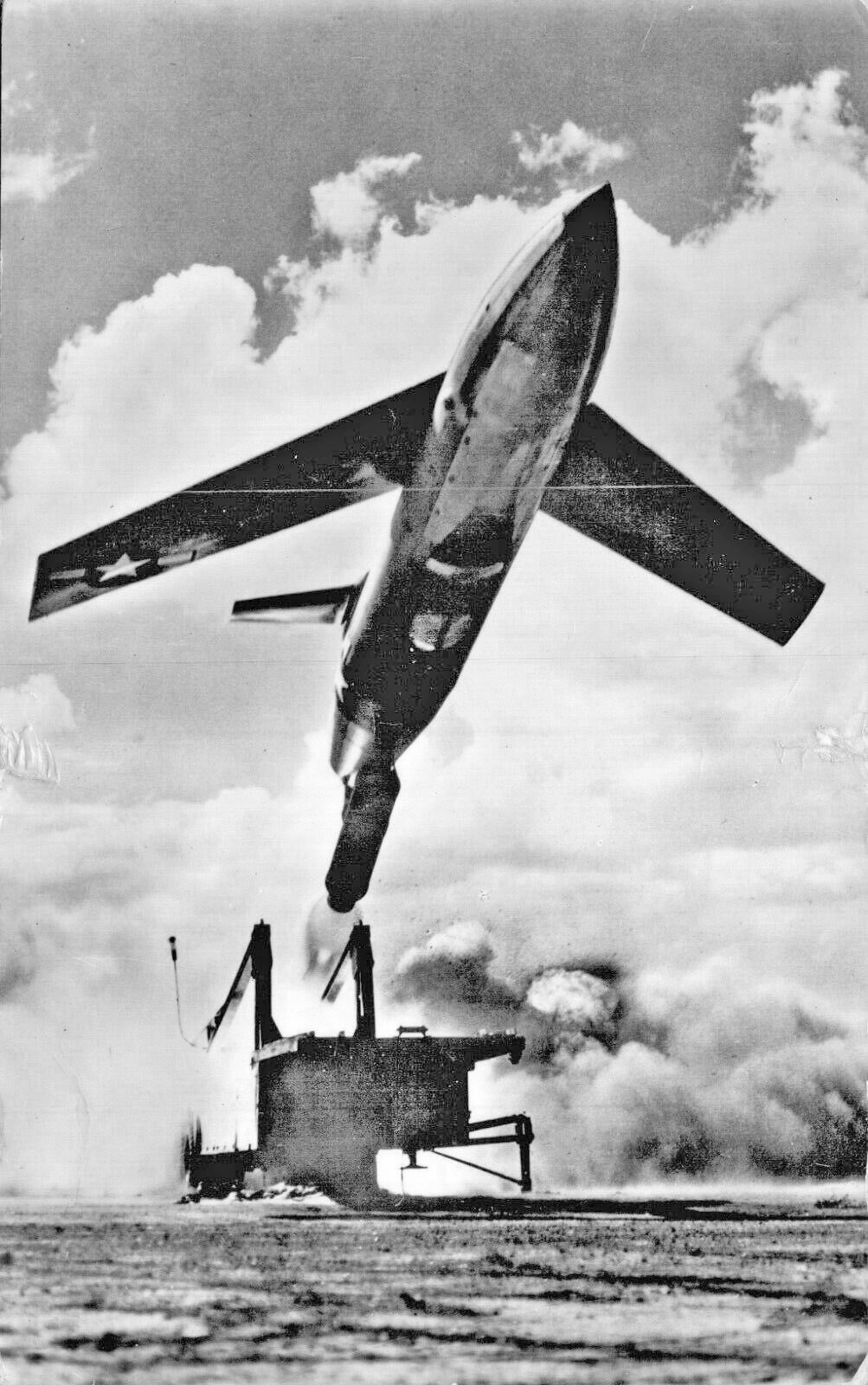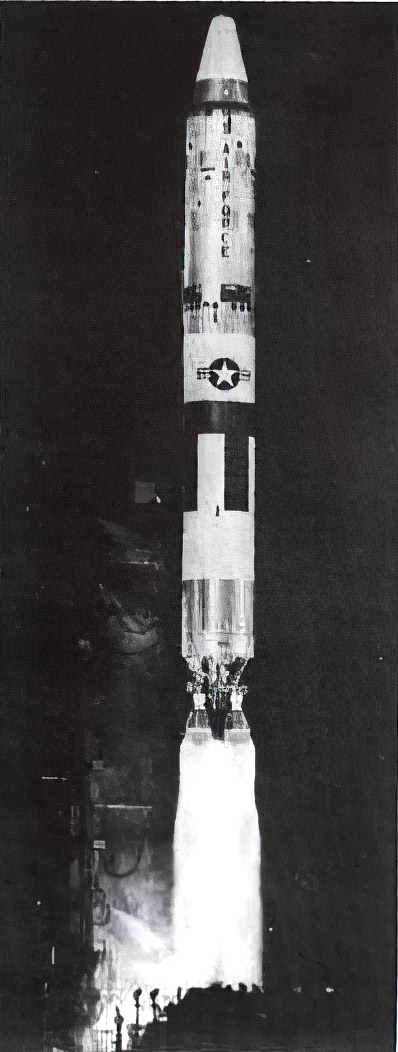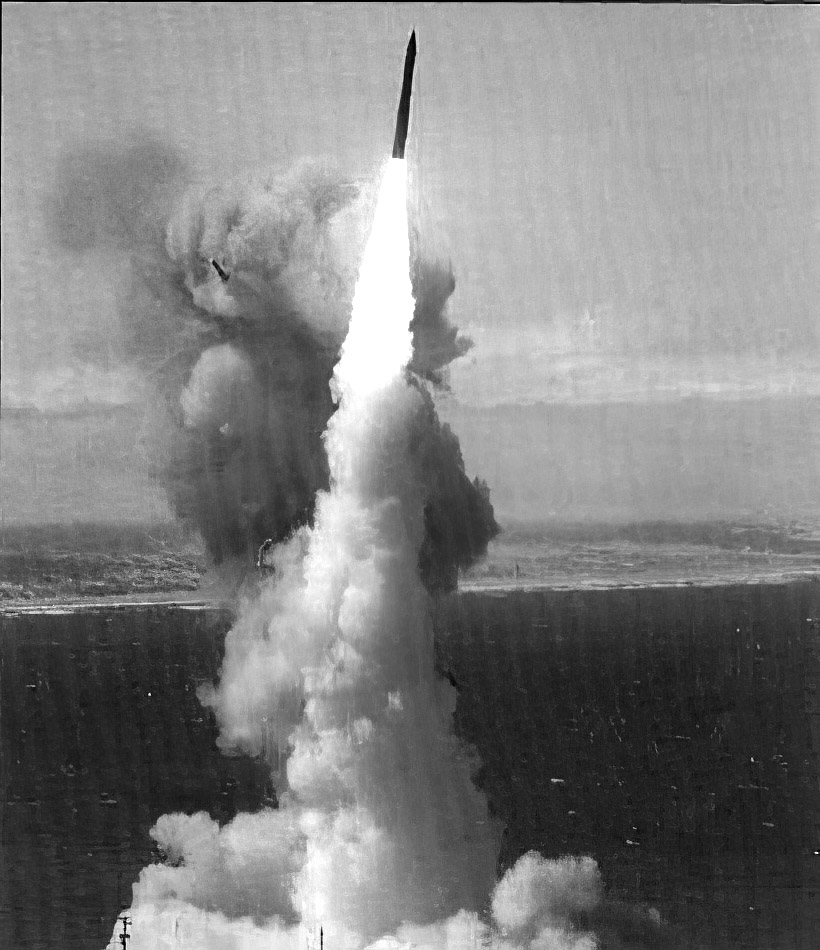|
|
|
|
|
Charlie Simpson
© «AAFM», June, 1997.
Our address: en@rvsn.info |
|
See also:
The article appeared in the June 1997 issue as a AAFM special issue. Autor – Colonel Charlie Simpson is also editor of the AAFM. Newsletter. Charlie Simpson was commissioned as an Air Force second lieutenant in November 1959 and retired as a colonel in August 1989 after nearly 30 years of service. Simpson initially served as an aircraft maintenance officer and transitioned to intercontinental ballistic missile duty 18 months later. "The threat we faced as a nation was very real back then, and a lot of focus was placed on the ICBM program," Simpson said. One of the toughest challenges he faced in his career was the 1962 Cuban missile crisis.
"I was sitting at work on Oct. 20 and we were preparing a Titan I missile for an exercise in a few days when I received a call from the Mountain Home Air Force Base (Idaho) command post to put the missile back on alert," he said. "We didn't know the reason for this until President Kennedy made his speech in regard to the Cuban missile crisis," said Simpson. "We went to a 24-hour schedule and everything at work became very tense as we waited to see what would happen." The tension finally came to an end when the Soviet Union agreed to withdraw all nuclear missiles from Cuba. After retirement, Simpson has remained an active member in the missileer community traveling and sharing his story. From: Charlie Simpson / Veterans in Blue, November 02, 2017 «AAFM», June, 1997. Newsletter of «Association of Air Force Missileers» .
A look at missiles in the Air Force from the first captured German V-ls to the latest ICBM Land Based Systems – The Air Force missile systems that have operated from the ground have included a wide variety of systems and missions, from early tests of captured German air-breathing and rocket powered V-ls and V-2s to the latest intercontinental ballistic missile. We have used land based missiles for short, medium and long range nuclear and non-nuclear missions, as well as for air defense and space missions. The JB-1 and JB-2: By 1944, the Army Air Force was working on two land based systems. The JB-2 (jet bomb) was the US version of the German V-1, and production began in late 1944. Never used in combat, it was tested more than 200 times by August 1945. Ford Motor Company produced the engine and Willys Overland the airframe, with 1,391 accepted before the program was terminated in September 1945. In the meantime, Northrop was tasked to develop the JB-1, a flying wing design (forerunner of the B-2?) that was first launched in December 1944. Like the V-l/JB-2, it was plagued with low speed, poor accuracy and a small payload. Several modifications resulted in the final variant, the JB-10, but it was little better than the original, so the program ended in March 1946. By April 1946, the AAF had twelve surface-to-surface and three surface-to-air programs underway. These projects included Nativ, Navaho, Matador, Hiroc, Snark, Boojum, Banshee, GAPA, Condor, Wizard, Thumper and several unnamed projects. These projects represented the full spectrum of propulsion systems (jet and rocket), airframe (cruise and ballistic), range (35 to 5,000 miles) and mission. The project designations were all in the MX-category. For example, the Matador was first designated the MX-771A.
By July 1947, the AAF had narrowed the field to the Navaho 1, 2 and 3, Matador, Boojum, Banshee, GAPA and Wizard. Boojum was a Northrop 5.000 mile range supersonic turbojet missile, Banshee was a drone version of the B-29, GAPA an air defense weapon and Wizard a study in ballistic missile defense. Convair developed a V-2 derivative, the MX-774. Several concepts that were carried into later ICBMs were developed with the MX-774, including using gas/liquid pressure to support the airframe (as in the Atlas), swiveling engines and a separating warhead. The project was one of many that was terminated in the July 1947 decision. By 1949, the number of projects was narrowed even further, with only the Navaho, subsonic Snark, follow-on supersonic Boojum and the Banshee remaining.
The Navaho and Snark – after deciding to concentrate on cruise missiles instead of the ballistic Atlas forerunner, the MX-774, the AF pressed on with development of the Northrop Snark (SM-62) and the North American Navaho (SM-64). Snark was launched from a mobile launcher with two solid boosters, and was powered by a Pratt and Whitney J-57. Programmed to fly at mach .9 at 45-50,000 feet for 1,500 to 5,000 miles, it was guided by an "automatic celestial guidance” system. In March 1957, the AF selected Presque Isle AFB, Maine, as the first Snark base, and activated the 556th Strategic Missile Squadron at Patrick AFB in December 1957 for Snark training and testing. The 556SMS successfully launched the first Snark from Cape Canaveral on 27 June 1958. In late 1958, CINCSAC General Tom Power recommended cancellation of the program because of reliability, vulnerability and accuracy problems, but the AF pressed on with deployment, activating the 702nd Strategic Missile Wing at Presque Isle on 1 January 1959. The 556SMS was scheduled to move north, but was inactivated in July 1959. The 702SMW had no subordinate squadrons – the Director of Missiles operated and maintained the assigned Snarks. A total of thirty were manufactured, with the first attaining alert status on 18 March 1960. The wing was declared operational in February 1961, but President Kennedy called the missile “obsolete and of marginal military value" and inactivated the 702SMW on 25 June 1961. During the same period, development of the Navaho progressed. Designed as a supersonic 5,500 mile range ramjet powered cruise missile, the Navaho was launched vertically mounted on a rocket booster. Several subsonic versions were tested, but the program was canceled in 1957, after the AF decided to develop ballistic missiles in a 1955 decision by President Eisenhower. The Navaho had two important legacies, the rocket motors in its booster were key in the development of Atlas and Titan engines and the X-1 was the first inertial guidance system and led to similar systems in Minuteman, the Hound Dog, submarines and other uses.
The First ICBMs – after the 1947 cancellation of Convair’s MX-774, funding for development of ICBMs was very limited until January 1951, when the AF funded Convair for a development program for ballistic and cruise options for a 5,000 mile range missile carrying one of the current heavy nuclear warheads, with a goal of a CEP (circular error probable) of 1,500 feet. The cruise, or glide, option was dropped later that year, and funding and development were limited until 1955. In late 1953, the Atomic Energy Commission developed the first smaller nuclear warhead, and in 1955, President Eisenhower, after the von Neumann and Rand reports recommended accelerated ICBM work, assigned the highest national priority to the dual track Atlas and Titan programs. The Western Development Division (WDD) in Southern California, cooperating with SAC, was tasked to proceed to initial operating capability (IOC) with these two new systems. IOC was originally defined as to be able to launch 25% of the assigned 40 missiles at each of the three planned bases within 15 minutes, with another 10 launched within two hours. The mix of Atlas, Titan and Thor IRBMs varied over the years between 1955 and 1957, with plans for varying totals, mixes and locations for missiles. The October 1957 launch of Sputnik changed all of the plans, with a great acceleration of all programs and an increase to the number of squadrons and missiles.
Atlas (SM-65, WS-107A-1) – the original requirements for Atlas called for a 240,000 pound vehicle with two 135,000 pound booster engines and a 60,000 pound sustainer engine. The Atlas A would be flown with only the booster engines, while the B and later versions would use the sustainer. The thin-skinned 85 foot long stainless steel missile was delivered at 260,000 pound, with total thrust of 360,000 pounds and a range of 6,325 nautical miles. Atlas was fielded in three versions, the D, E and F. Atlas continues today as a space workhorse, with Atlas 2 missiles still rolling off the assembly lines at Lockheed Martin. The first test flight for Atlas was missile A4 from Complex 14 at the Cape. Ten seconds after launch, one of the two booster engines failed and the missile was destroyed. On 17 December 1957, Atlas 12A lifted off and its two engines burned for the full programmed two minutes – the missile flew 600 miles down the Eastern Test Range and was declared a complete success. WDD and its follow-on, the Ballistic Missile Division, the AF and SAC changed basing modes, configurations and other factors in the late fifties, because of funding and many other reasons, but by 1959 the basing and configurations were finalized for Atlas D, E and F, Titan, Thor and Jupiter. Development and construction were on a fast track – the first unit to activate was the 576SMS at Vandenberg (Cooke AFB) on 1 April 1958 – the first Atlas D was placed on alert there on 31 October 1959. Atlas D (SM-65D) – deployed in soft, above ground horizontal "coffins” with three missiles and one control center per complex, the Atlas D was guided by a ground-based radio-inertial system. The missiles were raised to a vertical position by the erector before launch, were filled with liquid oxygen (LOX) and RP-1 propellant, and launched.
Atlas E (SM-65E) – the radio-inertial guidance was replaced by an all inertial guidance system, and the missiles were deployed singly with one control center per missile, with a squadron having nine complexes. The “coffin" for the Atlas E was built with roof at ground level, giving about 25psi protection against overpressure. Atlas F (SM-65F) – housed in an underground silo with adjoining control center, the Atlas F was filled with LOX and RP-1 at the start of the countdown, then raised to ground level by the massive silo elevator. The missile was therefore exposed above ground for a much shorter time than the earlier models, and the silo and control center were hardened to 100psi for blast protection. Each Atlas F squadron had 12 complexes.
Titan I (SM68, WS107A-2) – In 1955, the decision was made to pursue a second ICBM with the Martin Company, in case development of the Atlas ran into problems. The Titan I was similar in many respects, but at the same time offered some advantages for future development. The 220,000 two stage missile had a 300,000 pound thrust two chamber first stage engine, and a second stage engine with 80,000 pounds of thrust. The missile stood 95 feet high, and was deployed three to a complex in underground silos. The three silos, along with propellant storage and equipment buildings, were connected to the underground control center, powerhouse and radio guidance antennas by tunnel. Like the Atlas D, the Titan I used a radio-inertial guidance system, and the control center was equipped with a duplex guidance computer system for backup. There were also two guidance antennas that were raised to the surface for launch. The Titan I sat on alert fueled with RP-1, so only LOX had to be loaded at the start of the countdown. All three missiles at a complex could be LOX-loaded simultaneously, but only one raised topside for launch at a time. The first missile could be launched about fifteen minutes after notification, with the second and third following at about seven and a half minute intervals, since the guidance system could only control one at a time.
Thor and Jupiter – in 1955, during the development process for the early ICBM systems, one of the key decisions that was made was to develop, concurrently, an intermediate range ballistic missiles (IRBM). The Army, under the leadership of Werner von Braun, was developing its own medium range missile, the Jupiter. The AF selected Douglas Aircraft to begin work on the Thor As mentioned earlier, various combinations of Atlas. Titan I and IRBM units were part of the force and basing decisions that changed many times over the late 1950s. In November 1957, the Secretary of Defense made the decision to place both the Thor and Jupiter in production, with both to have initial operational capability by June 1958. The real surprise was a decision to have the AF deploy both – the Jupiter would not be an Army-manned system. The AF Chief of Staff strongly pushed for elimination of the Jupiter and increase in Thor production, but the decision by SecDef McElroy stood – both Thor and Jupiter would be deployed in Europe. The 1958 date was not met, with Thor entering the inventory in England in June 1959 and Jupiter first placed in Italy in April 1961 and Turkey in August of the same year. Both systems were designed to respond in 15 to 20 minutes, had a range of 1,500 miles, and used LOX and RP-1. Both systems remained part of the AF missile operational force until mid-1963, when the Thor and Jupiter units were deactivated in England, Italy and Turkey. President Kennedy made the deactivation decision part of the settlement of the Cuban missile crisis, but the real decision to shut down the two IRBM systems had really been made prior to the October 1962 event. Thor remained as a workhorse in the AF, used in spacelaunch, as an anti satellite launcher (many AAFM members served with the 10th Aerospace Defense Group and Squadron) and as the forerunner of the Delta booster, the solid-augmented space launch vehicle. Thor (SM-75) – the single stage, inertially guided 65 foot long missile. Thor in England was deployed in complexes of three missiles each, stored horizontally and launched vertically. Each squadron had five complexes for a total of fifteen missiles. Initially, SAC activated the 705SMW at Lakenheath RAF Station to monitor Thor deployment and provide assistance to the Royal Air Force, but this unit was deactivated and the functions assigned to 7th Air Division. SAC maintained control of the nuclear warheads throughout the operational life of the Thor IRBM. Thors were on alert at four locations from mid-1959 to mid-1963. The units, each with 15 missiles, were the 77th RAF SMS at Feltwell, the 97th RAF SMS at Hemswell, the 98th RAF SMS at Driffield and the 144th RAF SMS at North Luffenbaum. Jupiter (SM-78) – developed by the Army’s Redstone Arsenal in Alabama with the Chrysler Corporation. Jupiter was a single stage, inertially guided, 60 foot long missile. USAF, Italian and Turkish personnel were trained at Redstone for Jupiter operations and maintenance. Jupiter was deployed three missiles to a complex, with five complexes per squadron. The missile was stored vertically, with a shelter around the missile for environmental protection. Two squadrons, called NATO I, were based at Giola del Colie, Italy and one squadron, NATO II, at Cigli Air Base in Izmir, Turkey. Jupiter was operational from April 1961 (Italy) and March 1962 (Turkey) until April 1963. Like the Thor, SAC kept control of the nuclear warheads until execution.
Matador and Mace – Two early Cruise Missiles Throughout the debates and decisions on ballistic missiles in the late 1940s and 1950s, work continued on an AF cruise missile system that became part of our nuclear force in both Europe and the Pacific. Matador, then Mace, was deployed in Germany, Korea, Taiwan and Okinawa from the early 1950s until the late 1960s. Matador (TM-61) – with a range of 600 miles, guided by a dual guidance system that combined radar line-of-sight guidance by a ground-based controller with “Shanicle", a hyperbolic grid system similar to LORAN, the Matador was powered by a J-33 jet engine, the same used in the T-33 jet trainer. Built by the Martin Company, the Matador was carried on a road-capable mobile launcher, and was launched with a solid propellant booster. The missile cruised at up to 650 miles per hour to the target. The first operational AF missile, the first launch took place in December, 1950. Mace (TM-76) - the follow-on to the Matador was first launched in 1959, and replaced the earlier missiles. Powered by the same J-33 jet engine and launched using a solid rocket booster, the Mace A had a range of 650 miles. The Mace A featured a new guidance system called Automatic Terrain Radar and Navigator (ATRAN), a map matching system, and was carried by the same road-capable mobile launcher as the Matador. The Mace B had increased range, up to 1,200 miles, and was stored in hardened underground launch sites. A Missile for Air Defense – the BOMARC The Boeing-built BOMARC (IM-99) was another of the original proposals that started in the mid 1940s and continued to development and deployment. Launched vertically using a liquid propellant booster (BOMARC A) or solid booster (BOMARC B), the missile was powered by two RJ-43 Ramjet engines. Designed to be integrated into the Semi-Automatic Ground Environment control system for air defense developed in the late 1950s and early 1960s, the BOMARC was guided to the area of the target by a ground radar system that was tied to the SAGE computers, then a target-seeker took over to find the target aircraft and detonate the conventional or nuclear warhead. Developed after the early GAPA (Ground to Air Pilotless Aircraft) that was tested in the late 1940s, the BOMARC name came from the collaboration between Boeing (BO) and the University of Michigan Aeronautical Research Center (MARC). The BOMARC A flew at mach 3, and had a range of 250 miles, while the BOMARC B flew at mach 4 and up to 400 miles BOMARC A bases included McGuire AFB, NJ. Suffolk County AFB. NY, Otis AFB. MA. Dow AFB, ME and Langley AFB, VA. BOMARC B was based at McGuire, Otis, Langley, Niagara Falls Municipal Airport, NY, Duluth AFB, MN, and Kincheloe AFB, MI. Two sites were in Canada, at North Bay, Ontario and La Macaza, Quebec. Each base had 28 to 56 launchers. BOMARC continued to be launched at Vandenberg AFB into the 1970s as targets for other tests.
The Next Generation – In 1964. Secretary of Defense Robert McNamara made the decision to close the Atlas and Titan I units. The systems had provided an important initial ICBM capability for the country, and were key factors in the resolution of the Cuban missile Crisis in October 1962. Every operational Atlas and Titan I was brought to near countdown status at the start of the crisis – and maintained ready to launch through the weeks that followed. But the systems were expensive and difficult to maintain and operate, accuracy was poor and reliability low. A Titan I or Atlas unit required almost as many people to maintain 9 or 12 missiles as the upcoming solid fuel systems required for 150 missiles. On a normal day, over 80 operations, maintenance, support, security and food service occupied a Titan 1 site – all to operate 3 ICBMs.
The complexes were only hardened to 100psi, and response time was at least 15 minutes, with the missiles sitting in the open for the last few minutes before launch. Even though both Atlas and Titan I were undergoing major modifications to improve reliability, all were deactivated by June 1965. The Air Force had successfully executed a gigantic research, development, test, construction and deployment program for these systems – but it was time to move ahead with newer, better systems. This brief history will only touch on the development, deployment and operation of these later systems, since the AAFM newsletter has had numerous articles about them.
Titan II (SM-68B, LGM-25C) – development of the second generation Titan II had begun shortly after initiation of the Titan I program. This new system, approved for development in 1959, corrected the short comings of the earlier missile and its basing. The Titan II featured an all inertial guidance system, hypergolic fuel and oxidizer that could be stored in the missile, launch in less than one minute from the silo and a larger warhead. Each Titan II squadron had nine missiles, each in an underground silo with adjacent underground control center and manned by two officer and two enlisted combat crew members. The Titan II was operational from the early 1960s to the late 1980s at the 308th SMW, Little Rock AFB, AR, the 381st SMW, McConnell AFB, KS and the 390th SMW, Davis Monthan AFB, AZ. A member of AAFM, Dr. David Stumpf, is writing a history of Titan II and has interviewed many members who served in the system. His project is being funded by the USAF. The Titan Missile Museum in Green Valley, AZ, is located in one of the original 390SMW Titan II complexes – AAFM has provided funding for several of the museum's projects. Minuteman (SM-80, LGM-30) – studies for a small, three stage solid fueled ICBM began in 1955. Originally called Project Q, plans in 1958 called for 100 Minuteman missiles to be deployed by 1964, with 400 by 1965. The missile was a three stage solid propellant system with a single warhead and inertial guidance. As in the development phase of the other ICBMs, basing modes and other factors changed over the next few years. In 1959, the mobile Minuteman concept was given first priority, with the missile carried on trains that would roam the country. This concept was pursued for two years before it was canceled (or delayed – the concept was revived for the MX in the late 1970s). Meanwhile, work progressed on the silo version that became the main part of the ICBM force in the 1960s.
After the first Minuteman test flight in February 1961, Secretary of Defense McNamara made Minuteman deployment a crash effort. The first Minuteman I flight of ten missiles was rushed to alert on 24 October 1962. in the middle of the Cuban missile crisis. This flight was part of the 341SMW at Malmstrom AFB, MT, Minuteman Wing I. The LGM-30A Minuteman I was deployed in the 341SMW in three squadrons, and the LGM-30B Minuteman I in the 44SMW at Ellsworth AFB, SD, the 455SWM (changed to 91SMW) at Minot AFB, ND, the 351SMW at Whiteman AFB, MO, and the 90SMW at Warren AFB, WY. Minuteman I was housed in unmanned hardened silos, with ten silos controlled by an underground control center manned by two officer combat crew members. Each squadron had 50 missiles and five launch control centers (LCC). Minuteman II (LGM-30F) was deployed in the 321 SMW at Grand Forks AFB, ND, and the 564SMS, the fourth squadron in the 341SMW. The launch control centers for these four squadrons were a different configuration, with a revised cable/radio communications system to control the missiles. This version of Minuteman II was called “the Deuce" or, at Malmstrom, “the Odd Squad", because of the differences. The Minuteman units at Whiteman. Malmstrom and Ellsworth were upgraded to Minuteman II in the late 1960s, with the Minuteman-Modernized upgrade (the Mod Squad at Malmstrom).
For about two years, SAC changed the crew force to three-officer crews – in Minuteman II, the crewmembers were not allowed to “rest" (sleep) in the LCC, so the third crewmember (the Alternate Combat Crew Commander) was qualified to perform alert either at a Missile Combat Crew Commander (MCCC) or Deputy MCCC. Other combinations, including two crews alternating twelve hour shifts, were tried before changes in the system allowed the crew to “rest” in the LCC. Meanwhile, Minuteman III (LGM-30G) missiles replaced the Minuteman I missiles at Minot and Warren, and the Minuteman II missiles at Grand Forks were also replaced by Minuteman III. Minuteman III has a liquid fueled “fourth" stage and can carry three independently targeted warheads. The 44SMW at Ellsworth was deactivated in July 1994, and the 351 SMW at Whiteman the next year. Both of these closings were the result of Strategic Arms treaties – missiles were removed and silos were destroyed at both locations. The AF made the decision to close the 321SMW at Grand Forks, so Minuteman III missiles from there are replacing the last Minuteman II’s at Malmstrom. When the 321SMW closes in 1998, the ICBM force will consist of 200 Minuteman III at Malmstrom, and 150 each at Warren and Minot. Warren also has 50 Peacekeeper missiles in the 400SMS. Peacekeeper (LGM-118A) – in 1974, development began on a new ICBM, called Missile-X, or MX. Over the next seven years, a wide variety of basing modes were evaluated, including rail, ground vehicle and air mobile, using a number of different shelter concepts. In 1981, the decision was made to deploy the MX, now called Peacekeeper, in existing Minuteman silos. The missile carries 10 independently targeted warheads and is cold-launched from the silo, with the first stage ignited after the missile leaves the silo. Initially, 114 Peacekeepers in silos were planned, but deployment was capped at 50 in 1990. The fifty Minuteman III missiles in the 400SMS were replaced with Peacekeeper beginning in June 1986. The first missile was placed on alert on 10 October 1986. The fifty Peacekeepers will be removed as part of START II by 2004. GLCM – the Ground Launched Cruise Missile – In December, 1979, the NATO Foreign and Defense Ministers decided that the time had come to counter the Warsaw Pact’s buildup of theater nuclear forces. The Soviets were deploying medium range SS-20s targeted against Western Europe, and attempts at Intermediate Nuclear Forces (INF) negotiations limiting these weapons were not fruitful. The NATO ministers voted to deploy 108 Pershing II missiles, an Army system, and 464 ground launched cruise missiles (GLCM), an Air Force system, in Europe.
GLCM (Gryphonm BGM-109A) was based on the Tomahawk missile built by General Dynamics and was a ground mobile system deployed in flights of sixteen missiles each. A flight, consisting of four transporter-erector-launchers (TELs), two launch control centers (LCCs) and 16 support vehicles. The flight was secured in hardened Quick Reaction Alert shelters in the base GLCM Alert and Maintenance Area (GAMA), and relocated to remote, off-road locations selected by the flight commander to dig in, conceal equipment and be prepared to launch in wartime. The TEL was elevated for launch, and the missile boosted by a solid-fuel rocket motor. The booster was jettisoned and the small air-breathing cruise engine starts. The missile then used TERCOM (terrain-contour-matching) guidance and low-level flight to ensure highly accurate, all-weather penetration to the target. The missile had a range of 2,500 kilometers and superb accuracy. The GLCM program was one of the key elements that brought an end to the cold war. After we began deployment, the Soviets became serious about arms reduction talks, and finally agreed in the late 1980’s to an INF treaty that resulted in elimination of the Pershing and GLCM missiles in exchange for like reductions in Soviet systems. The INF treaty was only one aspect of GLCM impact – the economic impact of matching our deployment and defending against it eventually led to the collapse of the “Evil Empire.” Blue Scout – was used for emergency execution communications by SAC in the 1960s – the forerunner to the Minuteman II missiles at Whiteman that made up the Emergency Rocket Communications System (ERCS). The Blue Scout missiles were based in Nebraska. – Ballistic Missiles in the USAF. 1945-1960, Jacob Neufeld, Office of AF History, 1989 – A History of the USAF Ballistic Missiles, Ernest G. Schwiebert, – The Ground Launched Cruise Missile, Mark W. Nelson, Oklahoma ALC, 1992 – Air Force Almanac, Air Force Association, various issues – The Air Officer's Guide, The Stackpole Co., 1962 – The 1966 Aerospace Yearbook, Aerospace Industries Association of America, 1966 – US Bombers, B1-B70, Lloyd Jones, Aero Publishers, 1962 – The Development of Strategic Air Command, 1946-1981, Office of Historian, SAC, 1982 – From Snark to SRAM: A Pictorial History of SAC Missiles, Office of Historian, SAC, 1976
|
||||||||||||||||||||||||||||||||||||||||||||||||||||||||||||||||||||||||||||||||||||||||||||||||||||||||||||||||||||||||||||||||||||||||||||||||||||||||||||||||||||||||||||||||||||||||||||||||||||||||||||||||||||||||||||||||||||||||||||||||||||||||||||||||||||||||||||||||||||||||||||||||||||||||||||||||||||||||||||||||||||||||||||||||||||||||||||||||||||||||||||||||||||||||||||||||||||||||||||||||||||||||||||||||||||||||||||||||||||||||||||||||||||||||||||||||||||||||||||||||||||||||||||||||||||||||||||||||||||||||||||||||||||||||||||||||||||||||||||||||||||||||||||||||||||||||||||||||||||||||||||||||||||||||||||||||||||||||
